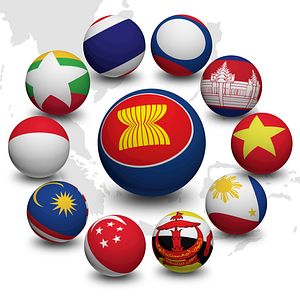The recent 49th ASEAN Foreign Ministers’ Meeting in Laos resulted in another round of tensions over issuing a joint communique on the South China Sea disputes due to Cambodia’s refusal to include any mention of the Permanent Court of Arbitration (PCA) ruling in the document. This means that Cambodia has, for the second time, prevented ASEAN from issuing a common position on the dispute, which sharpens the perceived division among members. Cambodia’s leaning toward China at the expense of ASEAN has led many observers to conclude the South China Sea disputes are diminishing ASEAN unity. I see this from a different perspective.
Incoherence within an international organization is not uncommon, given the fact that no sovereignty exists above the state level. Thus, despite an ability and willingness to cooperate at the international level, it is the state that determines when to cooperate (and when not to cooperate) with other states. When states decide to cooperate, it leads to coherence or unity; when states decide not to cooperate, incoherence or disunity follow instead. This is more apparent when there is intervention from external actors who have more power over these states and apply a “divide and rule” strategy to achieve their national interests. The European Union, a more integrated organization than ASEAN, is still incoherent when it has to negotiate with more powerful actors such as the United States, Russia, and China. Groups of member states within the EU have close relations to these states and represent the interest of these states in internal EU discussions. The EU is, therefore, often divided and unable to issue common positions against these states on various issues. Seen through this lens, ASEAN’s failure to issue a joint communique on the South China Sea is not surprising, and should not be directly interpreted as diminishing ASEAN unity.
In fact, ASEAN should not be seen only in institutional terms. In contrast to the EU, ASEAN has traditionally been more of a community-based organization. It took decisions often not through legal or rigid institutional procedure within the organization, but through familial discussion among members. Thus, ASEAN is not only the organizational structure, but also embodied in its members’ relations. The absence of decision or action at the ASEAN level does not necessarily mean the absence of concern among its members. As stated in the ASEAN document, and as must be emphasized here, ASEAN does not have to deal with every single issue that occurs in the region. In fact, it is advisable that each country, or group of countries, make efforts to settle their own problems before raising the issue to the ASEAN level. Indonesia, for example, settled border and territorial disputes with Malaysia and Vietnam through bilateral negotiation.
It is when bilateral negotiations deadlock that states usually ask for mediation by other ASEAN countries, which could also be interpreted as an indirect acknowledgement of the ASEAN sense of community. In the dispute between Thailand and Cambodia, for example, Indonesia served as mediator. And in the domestic conflict between the Philippine government and the Moro separatist movement, Indonesia and Malaysia mediated the conflict. Even if ASEAN members refer their disputes to international institutions, this should not be interpreted as a sign of diminishing ASEAN unity. As long as both disputing parties believe it is the best solution, then they should not remain stuck at the ASEAN level for the sake of unity and solidarity. Linking dispute settlement and ASEAN solidarity would only complicate the dispute.
This is also the case with the South China Sea disputes. This is not a defense of Cambodia’s stonewalling attitude at the 49th AMM. In fact, it would be helpful if Cambodia could demonstrate more tolerance to its fellow ASEAN members. However, it is difficult to control another state’s behavior within an international organization. What is more important here is that the South China Sea disputes have been going on for decades and linking the dispute to other points of contention — in this case ASEAN centrality — would only add another battlefront. In fact, this could be exploited by China to prolong the dispute and prevent any solution. Given the weakness of China’s claim, China gets an advantage from the status quo and lack of resolution of the dispute.
ASEAN, in this sense, should not fall into China’s game. Disputing states should focus on finding ways to settle their disputes. Rather than expecting a joint communique on the dispute at the ASEAN level, the Philippines and Vietnam should approach different ASEAN members whom they trust to help mediate the their dispute. In this way, ASEAN countries would gradually feel they have a responsibility to contribute to settling the disputes. In the meantime, it would be better for ASEAN to focus on bringing all members closer through its integration initiative so that in the future each ASEAN member would prefer to side with fellow ASEAN states rather than outside powers for pragmatic reasons.
Sukmawani Bela Pertiwi is a lecturer at the Department of International Relations, BINA NUSANTARA University, Jakarta, Indonesia.

































